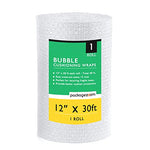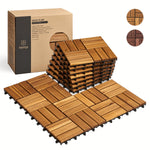You have no items in your shopping cart.
A Treasure in Every Bag
Salt, a humble mineral found abundantly in nature, has played an integral role in human history and continues to be a vital part of our lives today. From the seasoning on our food to the preservation of goods, salt's versatility knows no bounds. In this article, we will explore the wonders of the bag of salt, uncovering its intriguing origins, its numerous applications, and the scientific explanations behind its remarkable properties. So grab your bag of salt and join us on this enlightening journey.
The Bag of Salt: A Historical Perspective
The Salt of the Earth: Ancient Origins
In antiquity, salt was a highly prized commodity, often referred to as the "salt of the earth." Its significance can be traced back thousands of years to civilizations such as the ancient Egyptians, Romans, and Chinese. These early cultures recognized salt as a valuable resource, using it for both practical and spiritual purposes. The value of salt was so great that it was even used as a form of currency in some societies.
The Salt Trade: From Sea to Table
Salt has long been a driving force behind trade and exploration. The establishment of salt routes and trade networks allowed for the transportation of this precious mineral across vast distances. The historic salt trade routes, such as the famous Silk Road, not only facilitated the exchange of goods but also fostered cultural exchange and influenced the course of human history.
The Bag of Salt in Mythology and Symbolism
Throughout various mythologies and religious beliefs, salt holds symbolic meaning. In Christianity, for instance, salt is associated with purification and preservation. The phrase "worth one's salt" even stems from the ancient Roman practice of paying soldiers with an allowance for purchasing salt. These historical references highlight the profound impact that salt has had on the human psyche.
The Science Behind Salt: Composition and Properties
Chemical Composition: Breaking it Down
Salt, scientifically known as sodium chloride (NaCl), consists of two elements: sodium and chlorine. Sodium is an essential mineral that plays a crucial role in various bodily functions, including nerve transmission and fluid balance. Chlorine, on the other hand, aids in digestion and helps maintain proper pH levels in the body. The combination of these elements gives salt its distinctive taste and properties.
Crystalline Structure: Small Crystals, Big Impact
The crystalline structure of salt is responsible for many of its remarkable properties. When examined under a microscope, salt crystals appear as cubic formations with intricate patterns. This unique structure allows salt to dissolve easily in water, making it a versatile ingredient in various culinary and chemical processes.
The Role of Salt in Food: Taste and Beyond
Salt is renowned for its ability to enhance the flavors in food. It acts as a flavor enhancer by increasing the perception of certain tastes on our taste buds. In addition to its taste-enhancing properties, salt also plays a crucial role in food preservation. It inhibits the growth of microorganisms, such as bacteria and fungi, thereby preventing spoilage and extending the shelf life of perishable goods.
Salt in Chemistry and Industry
Beyond the kitchen, salt finds extensive use in various industries. Its properties make it an indispensable component in chemical processes, including the manufacturing of chlorine, caustic soda, and sodium carbonate. Furthermore, salt is a key ingredient in the production of glass, detergents, and countless other products that we encounter in our daily lives.
Unveiling the Versatility of the Bag of Salt
The Culinary Delights of Salt
When it comes to cooking, salt is an essential ingredient in virtually every cuisine around the world. Its ability to enhance flavors and bring out the best in ingredients is unparalleled. From savory dishes to baked goods, the judicious use of salt can elevate a simple recipe to new heights. So, reach for your bag of salt and savor the culinary delights it can bring to your table.
Salt for Preservation and Fermentation
Salt has been employed as a preservative for centuries, allowing humans to store food for extended periods without spoilage. Techniques such as salting, pickling, and curing rely on the antimicrobial properties of salt to prevent the growth of bacteria and molds. Whether it's preserving fish, fermenting vegetables, or curing meat, salt is a trusty ally in the art of preservation.
Salt as a Natural Cleaning Agent
Did you know that salt can be a powerful and eco-friendly cleaning agent? Its mild abrasive nature makes it ideal for scrubbing away stains and grime. Combine salt with other household ingredients like lemon juice or vinegar, and you have a potent cleaning solution that is both effective and safe. So, put that bag of salt to work and witness its magical cleaning prowess.
Salt in Personal Care and Beauty
Beyond the kitchen and household, salt finds its place in personal care and beauty regimens. Bathing in saltwater has long been celebrated for its therapeutic benefits, soothing sore muscles and rejuvenating the skin. Additionally, salt scrubs and exfoliating treatments help to slough off dead skin cells, leaving your skin radiant and smooth. Embrace the beauty-enhancing properties of salt and experience the wonders it can do for your self-care routine.
Salt as a Natural Remedy
Salt has been utilized in traditional medicine for its healing properties. From saline nasal rinses to gargling with saltwater for a sore throat, these age-old remedies harness the antibacterial and anti-inflammatory effects of salt. Additionally, salt baths are believed to aid in the treatment of skin conditions such as eczema and psoriasis. Explore the therapeutic potential of salt and unlock its healing powers.
FAQs: Unraveling the Mysteries of the Bag of Salt
1. Can consuming too much salt be harmful?
While sodium is an essential nutrient, excessive salt intake can have adverse effects on health. High sodium consumption has been linked to conditions such as hypertension and cardiovascular disease. It is important to maintain a balanced diet and moderate your salt intake to promote overall well-being.
2. Is there a difference between table salt and sea salt?
Table salt and sea salt differ in their sources and processing methods. Table salt is typically mined from underground salt deposits and undergoes refining to remove impurities. Sea salt, on the other hand, is derived from evaporated seawater and is often minimally processed, retaining trace minerals. The choice between the two depends on personal preference and the desired flavor profile.
3. How can I make my own flavored salt?
Creating flavored salts is a delightful way to add a unique twist to your culinary creations. Start by combining your favorite herbs, spices, or citrus zest with coarse salt. Allow the flavors to infuse for a few days, and voila! You have your very own custom-flavored salt to elevate your dishes.
4. Can I use salt for cleaning silverware?
Yes! Salt can be an excellent natural cleaner for tarnished silverware. Create a paste by mixing salt with a small amount of water, and gently rub it onto the tarnished areas. Rinse and polish the silverware to reveal its original luster.
5. Can salt be used as a natural weed killer?
Salt can indeed be used as an eco-friendly weed killer. Sprinkling salt directly onto weeds or creating a saltwater solution to spray on unwanted vegetation can help inhibit their growth. However, caution must be exercised as salt can also harm desired plants if not applied selectively.
6. What is the recommended daily salt intake?
The American Heart Association recommends consuming no more than 2,300 milligrams (mg) of sodium per day, which is roughly equivalent to 1 teaspoon of salt. However, individual needs may vary based on factors such as age, health conditions, and activity levels. It's always best to consult with a healthcare professional for personalized dietary guidance.
Celebrating the Bag of Salt
The bag of salt, a seemingly ordinary mineral, holds within it a world of historical significance, scientific wonders, and endless possibilities. From enhancing the flavors of our favorite dishes to preserving goods and beautifying our surroundings, salt has proven itself to be an invaluable companion throughout human civilization. So, next time you reach for that bag of salt in your kitchen or encounter its presence elsewhere, take a moment to appreciate the remarkable journey this versatile mineral has undertaken. Let the bag of salt continue to sprinkle its magic into our lives, one grain at a time.








